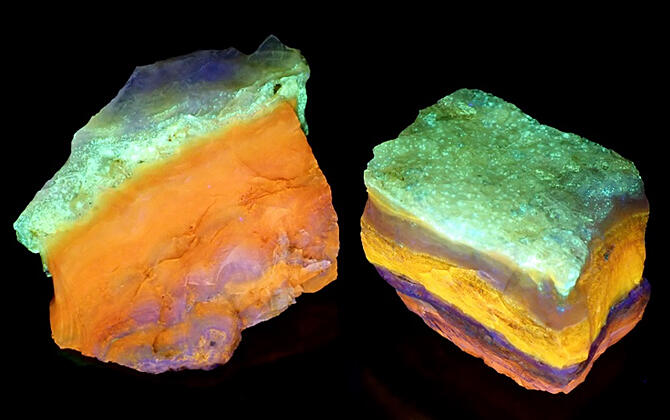A research group led by Senior Researcher Ryoji Tanaka of the Sagami Chemical Research Institute (Visiting Professor at Tokai University), Akihito Hagiwara of the Japan Society of Earth Science Education, Visiting Researcher Takashi Ishibashi of the Museum of Osaka University, and Yuuki Inoue of the Kyushu University Graduate School of Science discovered a new mineral, 'Hokkaido Stone' (scientific name: hokkaidoite)—a world first—from mountain forests in Shikaoi-chō Kato-gun and Aibetsu-chō Kamikawa-gun in Hokkaido. The first polycyclic aromatic hydrocarbon mineral discovered in Japan. It was approved and registered for naming by the International Mineralogical Association (IMA) in January and presented at the Japan Geoscience Union Meeting 2023.

Provided by Takashi Ishibashi, Museum of Osaka University
In Shikaoi-chō, Hokkaido Stone is present in opals formed by old hot springs that once existed in the middle of volcanos. In Aibetsu-chō, it is found as pale-yellow plate-like crystals in the voids of veins composed of quartz (silicon dioxide) at the site of a mine.
In particular, in the opals found in Shikaoi-chō, Hokkaido Stone occurs in abundance as fine pale yellow dendritic crystals that emit brilliant yellow to yellowish green fluorescence when irradiated with ultraviolet light.
Hokkaido Stone is a natural crystal of benzo[ghi]perylene, an organic compound composed only of carbon and hydrogen, and is considered to be a natural precursor of the organic compound 'coronene.' The natural generation of Hokkaido Stone provides valuable information on the mechanisms and processes of coronene formation and purification, details of which were previously lacking.
Currently, the areas where Hokkaido Stone was formed are protected and not open to the public. However, specimens of Hokkaido Stone and related minerals collected for description purposes are being displayed at the Tokachi Shikaoi Geopark Visitor Center, the Hokkaido University Museum, and the Higashitaisetsu Nature center (a joint development of the Ministry of the Environment and the Kamishihoro-chō).
This article has been translated by JST with permission from The Science News Ltd. (https://sci-news.co.jp/). Unauthorized reproduction of the article and photographs is prohibited.




